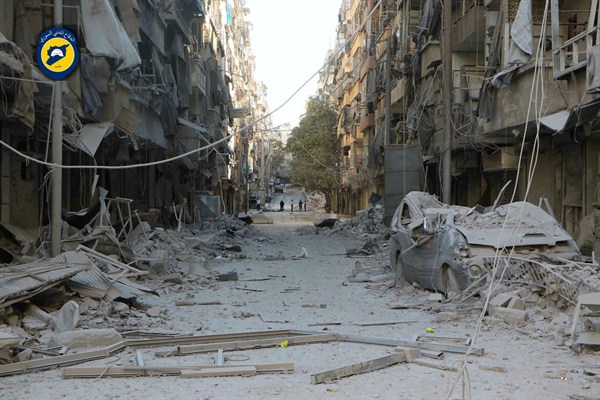If it is hard to grasp the scale of devastation in rebel-held Aleppo this week, given the past four years of bitter warfare in Syria’s largest city, consider this detail from Liz Sly and Louisa Loveluck’s reporting in The Washington Post. With no electricity, “families huddle together in the dark” at night, when the bombings are the worst, “gathered in one room so that they don’t die alone, listening to the roar of the jets and waiting for the bombs to fall.” Taking shelter on the lower floors of apartment buildings, “entire families sleep in one room, because they prefer to die together than to create orphans, widows or bereaved parents.”
Since the collapse last week of a flawed and short-lived cease-fire that was brokered by the United States and Russia, the forces of Syrian President Bashar al-Assad, backed by Russian jets, have attempted to retake the rebel-controlled eastern neighborhoods of Aleppo with unusually brutal force, even for this war.
“Bombs are raining from Syria-led coalition planes and the whole of east Aleppo has become a giant kill box,” the operations director of Doctors Without Borders said Friday. Syrian and Russian forces have reportedly dropped huge bunker-buster bombs, along with white phosphorus and incendiary weapons. The volunteer rescuers, known as the White Helmets, who rush to save Syrians from the rubble of airstrikes and barrel bomb attacks, say that nearly 1,000 people have been killed in a little more than a week in Aleppo. The White Helmets have become targets themselves; in one night of airstrikes last week, three of their four operations centers were hit. “What’s happening now is annihilation in every sense of the word,” Ammar al-Selmo, the head of the White Helmets in Aleppo, told Reuters.

